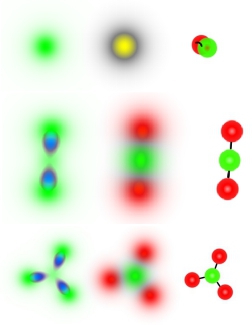Chandrasekhar Chatterjee, Sven Bjarke Gudnason†, Muneto Nitta
† : corresponding author
In this paper [1], I make a mathematical generaliza- tion of the two-component superconductor which describes two superconductors separated by a very thin layer of in- sulating material and in turn is the home of the famous Josephson effect. The Josephson effect, which was found by Josephson in his Ph.D. thesis (which was only 5 pages long), describes the quantum mechanical tunneling effect of a Cooper pair jumping from one superconductor to the other. A Cooper pair is the moving particle in a supercon- ductor, which consists of two electrons in a very particular state. In particular, there is no resistance of the current of the Cooper pair and hence the name superconductor. The Josephson junction, which I just described is cen- tral to many high-tech electronic devices like the SQUIDS and qubits, which are an integral part of modern quan- tum computers. The mathematical generalization I have made in this paper, is to allow for the two Cooper pairs to have generic electric charges, instead of −2 as the normal electron-electron pair has. The Josephson effect is a cou- pling between the two superconductors, but is no longer necessarily a tunneling effect, since Cooper pairs with different charges cannot tunnel from one to another. A superconductor expels the magnetic field from the bulk of its material, but for a certain type of superconductor and for strong enough magnetic fields, the field can penetrate, making small pin holes through the su- perconductor: these are called (magnetic) vortices and were understood by Abrikosov, who received the Nobel prize in 2003 together with Ginzburg and Leggett. Nevertheless, mathematically, the interaction can still exist and it has the clear effect that the vortices in the two superconductors are attracted to each other and in fact they stretch a domain wall (line) between them, hence they want to be near each other to minimize the tension of the domain line. Fig. 1 shows three examples of molecules of vortices, where one of the superconductors has charge 1 and the other has charge 1,2,3 in Fig. 1(a),(b),(c), respec- tively. No such material is known yet and I am waiting for physicists to discover these tantalizing structures in the real world.

Figure 1: Vortex pairs in a generalization of the two- component superconductor with the Josephson effect.
Publication
[1] C. Chatterjee, S. B. Gudnason and M. Nitta, “Chemical bonds of two vortex species with a generalized Josephson term and arbitrary charges,” JHEP 04, 109 (2020) doi:10.1007/JHEP04(2020)109 [arXiv:1912.02685 [hep-th]].

 Research /
Research Achievements /
Science & Technology /
School of Mathematics and Statistics /
Content
Research /
Research Achievements /
Science & Technology /
School of Mathematics and Statistics /
Content


